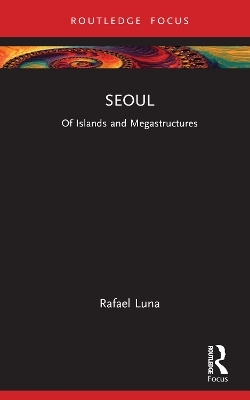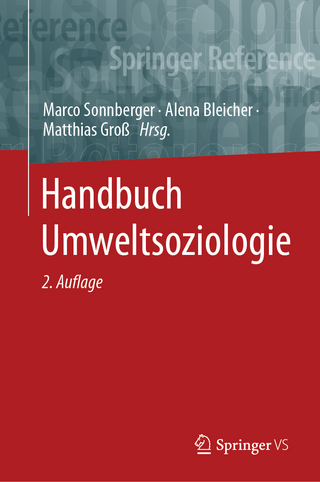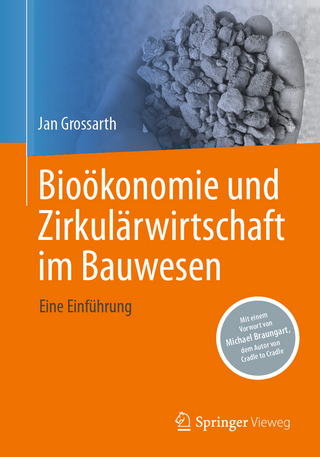
Seoul
Routledge (Verlag)
978-1-032-68494-9 (ISBN)
In a broader sense, the book discusses the dichotomy between city and urbanization: “city” being an architectural problem of bounded forms, while “urbanism” is an infrastructural project of expansion. It is an uncontested reality that urbanization is a continuous global process that has produced nebulous conurbations labeled as megacities. These expand beyond the virtual administrative boundary of any said “city,” producing a discrepancy between an area of administrative control and the real physical condition of human settlement. If there were a better formal understanding of megacities through their typological architectural conditions, then there could be a better assessment of the qualitative state of urbanization. Avant-garde groups from the 1950s, 1960s, and 1970s such as Team X, the Situationist, the Structuralist, and the Metabolist worked with ideas of megaforms and megastructures to address this issue. Although most of these proposals remained as paper architecture, this book reevaluates some of these ideas for the 21st-century megacity, using Seoul as a case study due to its clear typological formations produced over its diff erent periods of governance. The aim is to present the concept for an infra-architectural hybrid model of typological islands and subterranean megastructure that organizes Seoul as a flexible multi-linear city.
This book will be of interest to academics and students of architecture, urban geography and Asian studies.
Rafael Luna is the co-founder of the architecture firm PRAUD, a senior lecturer at the University of Technology Sydney, and the director of the Infra-Architecture Lab. He received a master of architecture from the Massachusetts Institute of Technology (2010) and his Ph.D. in architecture focused on infra-architectural typologies as urban models from L’Accademia di architettura dell’Università della Svizzera italiana, Mendrisio, Switzerland (2022). Luna is the award winner of the Architectural League Prize 2013, and his work has been exhibited at the MoMA, Venice Biennale and Seoul Biennale. Luna was a co-curator of the Cities Exhibition for the 2019 Seoul Biennale, awarded by the Mayor of Seoul. He has professional experience from the offices of Toyo Ito and Associates, KPF, Ateliers Jean Nouvel, Martha Schwartz Partners, dECOI, Sasaki Associates, and Machado and Silvetti. He served as an assistant professor at Hanyang University from 2018 to 2022, previously teaching at the Rhode Island School of Design. His writings have been published in journals such as G+L, Topos, MONU, SPACE, and IntAR Journal, and he was a guest editor for AD magazine’s September 2021 issue Production Urbanism: The Meta-Industrial City . He is the co-author of I Want to Be Metropolitan , the North Korean Atlas (received the DAM award), and A Language of Contemporary Architecture: An Index of Topology and Typology .
List of figures
Acknowledgments
Chapter 1
Introduction: Understanding Seoul in the Context of Urbanization
-A Brief Introduction to Seoul
-The State of Urbanization
-Urbanism And an Architectural Reaction
Chapter 2
A History of Infra-Architecture
-Industry and Mobility
-Decentralization
-Megastructure as Urban Scaffolding:
-Metabolism
-Performative Landscapes
-A Recap for Seoul
Chapter 3
Nine Typological Islands
-Joseon Dynasty Period (1394–1896)
-Daehan Empire Period (1897–1910)
-Japanese Occupation Period (1910–1945)
-Park Chung Hee Period (1963–1979)
-Globalization Period (1980–2002)
-Cultural Industry Period (2002–present)
-Application of Architectural Typological Islands
Chapter 4
The Infra-Architectural Typology
-Description and Brief History of Seoul’s Underground System
-Paradigm Shift Toward a Metro-Centric City
-Programming the Megastructure
-System as a Megastructure
Chapter 5
Toward an Infra-Architectural Urbanism
-Theorizing an Infra-Architectural Urbanism and Interior Urbanism
Bibliography
Index
| Erscheinungsdatum | 02.05.2024 |
|---|---|
| Reihe/Serie | Built Environment City Studies |
| Zusatzinfo | 10 Line drawings, black and white; 10 Halftones, black and white; 20 Illustrations, black and white |
| Verlagsort | London |
| Sprache | englisch |
| Maße | 138 x 216 mm |
| Gewicht | 421 g |
| Themenwelt | Geisteswissenschaften ► Geschichte |
| Naturwissenschaften ► Biologie ► Ökologie / Naturschutz | |
| Naturwissenschaften ► Geowissenschaften ► Geografie / Kartografie | |
| Sozialwissenschaften ► Soziologie ► Spezielle Soziologien | |
| Technik ► Architektur | |
| ISBN-10 | 1-032-68494-1 / 1032684941 |
| ISBN-13 | 978-1-032-68494-9 / 9781032684949 |
| Zustand | Neuware |
| Haben Sie eine Frage zum Produkt? |
aus dem Bereich


